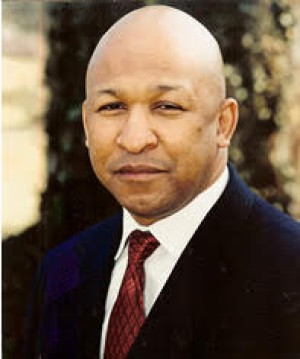- Video Library
- Jerome Canady Presents US Medical Innovations at LSI USA ‘23
Jerome Canady Presents US Medical Innovations at LSI USA ‘23

Jerome Canady
Dr. Canady is a native of Philadelphia, PA. He is the Co-Founder, Chairman, Chief Executive Officer and partner at US Patent Innovations, LLC and subsidiary US Medical Innovations, LLC. He completed his undergraduate education at Villanova University, Villanova, PA by earning a Bachelor of Arts. Dr. Canady had a major concentration in German and a minor in Russian languages. He obtained his medical degree from Temple University School of Medicine, Philadelphia, PA. Dr. Canady completed his General Surgery residency at the University of Pittsburgh Medical Center (UPMC) at McKeesport, McKeesport, PA and Postdoctoral Fellowship in Immunology and a Clinical Fellowship in Organ Transplantation (Liver, Kidney and Pancreas) at Yale University School of Medicine/Yale New Haven Hospital. As part of the Yale program, he completed an Advanced Clinical Fellowship in the department of General Surgery, Visceral and Organ Transplantation, Humboldt University Charite Mitte Campus Virchow Clinic Berlin, Germany under the supervision of Professor and Chief Peter Neuhaus, M.D. He primarily concentrated the surgical resection and management of complex benign and malignant tumors of the upper gastrointestinal tract i.e. hepatobiliary, pancreas, cholangiocarcinoma, pancreas, intestinal, distal esophagus, stomach as well as Organ Transplantation (liver, kidney, pancreas, intestine). After Berlin he returned as a Senior Advanced Clinical Fellow in Multi Visceral & Intestinal Transplantation (Adult & Pediatric) at the University of Pittsburgh Medical Center and Children’s Hospital of Pittsburgh under Thomas Starzl, MD, PhD and John Fung, MD, PhD. After Pittsburgh, Dr. Canady returned to Humboldt University Charite of Berlin as a visiting surgeon and continued his concentration on the surgical management of complex tumors gastro- intestinal tract and multiple organ transplantation. Dr. Canady was also a visiting surgeon at Kyoto University Department of Surgery/Transplantation Kyoto, Japan mastering the technique of Split Liver Transplantation under the Chief of Transplantation, Professor Koichi Tanaka, M.D. Throughout 2019-2020, Dr. Canady completed a fellowship in Peritoneal Surface Malignancy, HIPEC, Cytoreduction as a Visiting Professor of Surgery in the Department of General and Surgical Oncology (Chief Aviram Nissan, M.D.) at the Chaim Sheba Medical Center, Tel HaShomer, Israel.
Dr. Canady authored and co-authored over 70 scientific publications and travelled as a Visiting Professor of Surgery and lecturer in the U.S., China, Europe, Israel, Japan, South America, Russia and UAE. His patent portfolio contains over 250 patents or patent pending inventions. Dr. Canady is a Fellow of the American College of Surgeons, Diplomate of the American Board of Surgery. He is also certified by the American Society of Transplant Surgeons (Yale University School of Medicine and University Pittsburgh School of Medicine).
Jerome Canady
Dr. Canady is a native of Philadelphia, PA. He is the Co-Founder, Chairman, Chief Executive Officer and partner at US Patent Innovations, LLC and subsidiary US Medical Innovations, LLC. He completed his undergraduate education at Villanova University, Villanova, PA by earning a Bachelor of Arts. Dr. Canady had a major concentration in German and a minor in Russian languages. He obtained his medical degree from Temple University School of Medicine, Philadelphia, PA. Dr. Canady completed his General Surgery residency at the University of Pittsburgh Medical Center (UPMC) at McKeesport, McKeesport, PA and Postdoctoral Fellowship in Immunology and a Clinical Fellowship in Organ Transplantation (Liver, Kidney and Pancreas) at Yale University School of Medicine/Yale New Haven Hospital. As part of the Yale program, he completed an Advanced Clinical Fellowship in the department of General Surgery, Visceral and Organ Transplantation, Humboldt University Charite Mitte Campus Virchow Clinic Berlin, Germany under the supervision of Professor and Chief Peter Neuhaus, M.D. He primarily concentrated the surgical resection and management of complex benign and malignant tumors of the upper gastrointestinal tract i.e. hepatobiliary, pancreas, cholangiocarcinoma, pancreas, intestinal, distal esophagus, stomach as well as Organ Transplantation (liver, kidney, pancreas, intestine). After Berlin he returned as a Senior Advanced Clinical Fellow in Multi Visceral & Intestinal Transplantation (Adult & Pediatric) at the University of Pittsburgh Medical Center and Children’s Hospital of Pittsburgh under Thomas Starzl, MD, PhD and John Fung, MD, PhD. After Pittsburgh, Dr. Canady returned to Humboldt University Charite of Berlin as a visiting surgeon and continued his concentration on the surgical management of complex tumors gastro- intestinal tract and multiple organ transplantation. Dr. Canady was also a visiting surgeon at Kyoto University Department of Surgery/Transplantation Kyoto, Japan mastering the technique of Split Liver Transplantation under the Chief of Transplantation, Professor Koichi Tanaka, M.D. Throughout 2019-2020, Dr. Canady completed a fellowship in Peritoneal Surface Malignancy, HIPEC, Cytoreduction as a Visiting Professor of Surgery in the Department of General and Surgical Oncology (Chief Aviram Nissan, M.D.) at the Chaim Sheba Medical Center, Tel HaShomer, Israel.
Dr. Canady authored and co-authored over 70 scientific publications and travelled as a Visiting Professor of Surgery and lecturer in the U.S., China, Europe, Israel, Japan, South America, Russia and UAE. His patent portfolio contains over 250 patents or patent pending inventions. Dr. Canady is a Fellow of the American College of Surgeons, Diplomate of the American Board of Surgery. He is also certified by the American Society of Transplant Surgeons (Yale University School of Medicine and University Pittsburgh School of Medicine).

17011 Beach Blvd, Suite 500 Huntington Beach, CA 92647
714-847-3540© 2025 Life Science Intelligence, Inc., All Rights Reserved. | Privacy Policy







